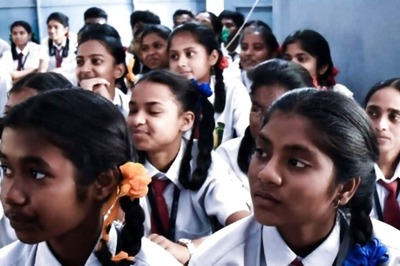
views
As a brutal wave of coronavirus cases batters India, public health experts worry that a new, possibly more virulent coronavirus variant could be racing through the crowded nation of over 1.3 billion people.
The new variant that has a so-called double mutation is said to be fueling this deadlier new wave of infections. With over 200,000 fresh cases for the past three consecutive days, India has surpassed Brazil to be the second worst-affected and has already begun to overwhelm the hospitals and crematoriums.
“This is a variant of interest we are following,” Maria Van Kerkhove, the World Health Organization (WHO)’s technical lead officer on Covid, told Bloomberg.
“Having two of these mutations, which have been seen in other variants around the world, are concerning,” she said. There was a similarity with mutations that increase transmission as well as reduce neutralization, possibly stunting the ability of vaccines to curb them, she added.
The new strain underscores the insidious nature of viruses that evolve over time. This double-mutant has now been reported in at least 10 other countries.
How did the double mutation variant emerge?
The new variant, called B.1.617, was initially detected in India with two mutations- E484Q and L452R. It was first reported late last year by a scientist in India and more details were presented before the WHO on Monday, according to Van Kerkhove.
At the end of March, the health ministry first acknowledged the presence of such a “double mutant”, but has downplayed it since, reported Bloomberg. While it’s a variant of interest, it “has not been stamped as a ‘variant of concern’ so as to say that it is more lethal or more infectious,” Aparna Mukherjee, a scientist at the Indian Council of Medical Research (ICMR), which works under the nation’s health ministry told Bloomberg on Friday.
Where has been the double mutation found so far?
The double mutation has been found in several countries like Australia, Belgium, Germany, Ireland, Namibia, New Zealand, Singapore, the UK and the US, as per the April 16 statement from the Indian government. “Higher transmissibility of this variant is not established as yet,” it said.
As of April 16, 408 sequences in the B.1.617 lineage have been detected of which 265 were found in India, a situation report on outbreak.info shows. A surveillance report by the UK government said it has found 77 cases in England and Scotland so far, designating it as a “Variant Under Investigation.”
New Zealand has temporarily suspended arrivals of its citizens and residents from India due to the spike in the number returning with Covid. Brazil was also shunned as a Covid superspreader by its neighbors who were nervous about the virus strain next door.
Is the double mutation responsible for the record surge in infections in India?
Genome sequencing has indicated that the variant is a possible culprit, though the Indian government hasn’t confirmed it. The average prevalence of the variant surged to as high as 52% of samples sequenced in April from almost nothing in January, according to website tracker outbreak.info, which uses data from global repository GISAID.
In several districts of Maharashtra, particularly Mumbai which was the epicenter of the current wave, the prevalence of this variant was more than 60%, Anurag Agrawal, director of the state-run Council of Scientific and Industrial Research’s genomics institute that’s conducting sequencing said.
The B.1.617 was present in samples from about 10 Indian states and while the percentage may vary, it was expected to rise as “it has two critical mutations that make it more likely to transmit and escape prior immunity,” Agrawal said.
Both mutations are known to decrease, although not completely eliminate but the binding of the antibodies created by infection and vaccination, Jesse Bloom, an associate professor for genome sciences and microbiology at the University of Washington told Bloomberg.
“Mutations at sites E484 and L452 have been observed separately, but this is the first major viral lineage that combines the two,” said Bloom. “I do think that this new viral variant is important to monitor.”
After being complacent in mapping virus genomes in recent months, India did sequencing for less than 1% positive samples as of last month, the country is now scrambling to cover lost ground. “We are attempting to do at least 5% of whatever samples are there,” said ICMR’s Mukherjee.
“It looks like it is spreading faster than pre-existing variants,” said Rakesh Mishra, the Hyderabad-based director of the Centre for Cellular and Molecular Biology. “Sooner or later, it will become prevalent in the whole country, given the way it is spreading,” he added.
Read all the Latest News, Breaking News and Coronavirus News here. Follow us on Facebook, Twitter and Telegram.




















Comments
0 comment